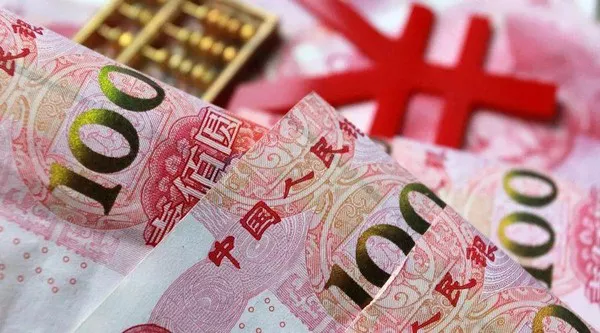The Chinese yuan, also known as the Renminbi (RMB), holds a significant position in the global economic landscape. As China’s economy has grown rapidly over the past few decades, so has the importance of its currency. Among the various milestones in the yuan’s evolution, the year 1999 marks a crucial turning point. In this article, we delve into everything you need to know about the 1999 Chinese yuan – its historical context, key features, and the impact it has had on China’s economy and the global financial system.
Historical Context:
To understand the significance of the 1999 Chinese yuan, it’s essential to first grasp the historical context in which it emerged. China’s currency has undergone several reforms since the founding of the People’s Republic of China in 1949. Prior to 1994, the yuan’s value was tightly controlled by the government, pegged at an artificially low exchange rate against the US dollar.
In 1994, China embarked on a path of economic liberalization and exchange rate reform by establishing a dual-track currency system. This system included an official exchange rate for trade and investment transactions and a separate, more market-oriented rate for non-trade transactions. However, this dual-track system created distortions and inefficiencies in the economy, prompting further reforms in subsequent years.
Key Features of the 1999 Chinese Yuan:
The year 1999 marked a significant milestone in China’s exchange rate regime with the introduction of a unified exchange rate system. This move aimed to streamline and simplify China’s foreign exchange system, promoting greater efficiency and transparency in the currency market. Key features of the 1999 Chinese yuan include:
Unified Exchange Rate: The most notable feature of the 1999 Chinese yuan reform was the unification of the dual-track exchange rate system into a single, market-based exchange rate. This unified rate replaced the previous system of multiple exchange rates, bringing greater consistency and coherence to China’s currency policy.
Managed Float: While the unified exchange rate introduced greater flexibility into China’s exchange rate regime, it was not a fully floating currency. Instead, the Chinese government maintained a managed float system, allowing the yuan to fluctuate within a specified band against a basket of currencies, with the central bank intervening as needed to stabilize the exchange rate.
Gradual Appreciation: Following the unification of the exchange rate system, the Chinese yuan embarked on a gradual path of appreciation against the US dollar and other major currencies. This appreciation was in line with China’s broader economic objectives, including promoting domestic consumption, reducing inflationary pressures, and addressing external imbalances.
Market Forces: The reforms introduced in 1999 aimed to give market forces a more prominent role in determining the value of the Chinese yuan. While the central bank retained some control over the currency through intervention in the foreign exchange market, market supply and demand dynamics played a more significant role in shaping the yuan’s exchange rate.
Impact of the 1999 Chinese Yuan Reform:
The introduction of the unified exchange rate system in 1999 had far-reaching implications for China’s economy and the global financial system. Some of the key impacts include:
Trade Balance: One of the primary objectives of the 1999 yuan reform was to promote more balanced trade relations by allowing the currency to reflect market fundamentals. As the yuan appreciated gradually against the US dollar, Chinese exports became relatively more expensive, contributing to a rebalancing of the country’s trade surplus.
See Also:A Full Guide to the Yuan Reserve Currency Status
Foreign Investment: A more flexible and market-oriented exchange rate regime bolstered confidence among foreign investors, leading to increased foreign direct investment (FDI) inflows into China. The gradual appreciation of the yuan also enhanced the attractiveness of investing in China, as investors anticipated potential gains from currency appreciation.
Global Financial Integration: The 1999 yuan reform marked a significant step towards China’s greater integration into the global financial system. As the yuan became more widely used in international trade and investment transactions, it emerged as an important reserve currency alongside the US dollar, euro, and Japanese yen.
Policy Challenges: While the 1999 yuan reform brought about numerous benefits, it also posed challenges for Chinese policymakers. Managing the pace of yuan appreciation to avoid disrupting export-led growth, addressing concerns about currency manipulation from trading partners, and maintaining financial stability amid capital inflows were among the key challenges faced by policymakers.
Conclusion:
The 1999 Chinese yuan reform represents a pivotal moment in the evolution of China’s exchange rate regime and its integration into the global economy. By unifying the exchange rate system and introducing greater flexibility, China aimed to promote market-driven economic growth, rebalance trade relations, and enhance its role in the global financial system. While the reform brought about significant benefits, it also posed challenges that required careful management by policymakers. Looking ahead, the trajectory of the Chinese yuan will continue to be shaped by domestic economic priorities, global market dynamics, and evolving geopolitical trends.
This comprehensive guide provides insights into the historical context, key features, and impact of the 1999 Chinese yuan reform, shedding light on its significance in China’s economic transformation and its implications for the broader global financial landscape.
Related Topics:


























